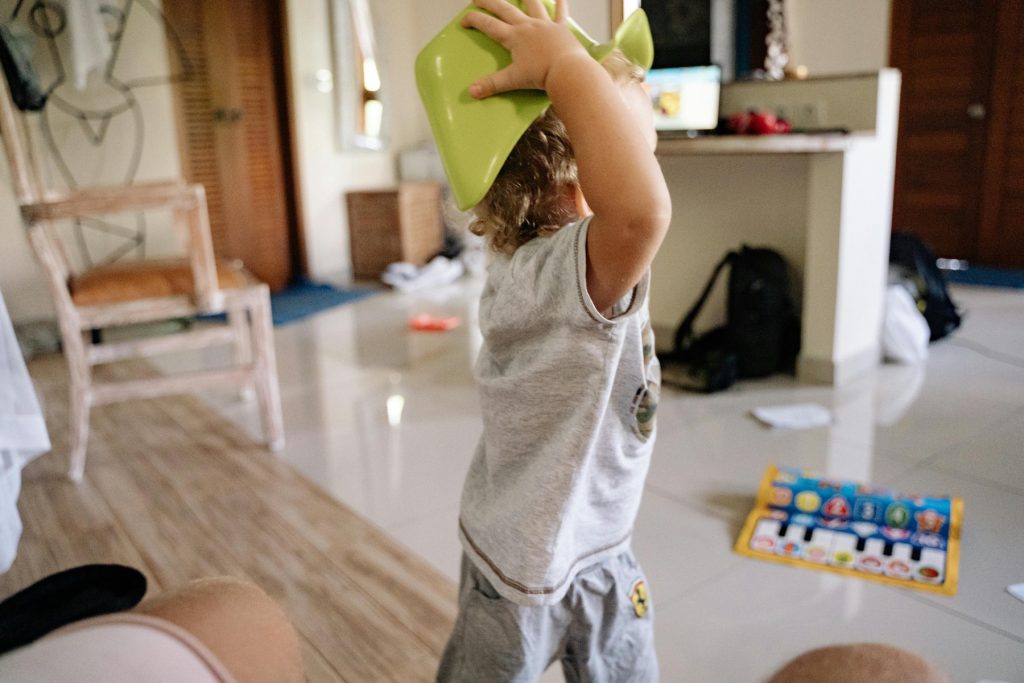SHOPPING CART
No products in the cart.
In the journey of a child’s development, there exists a realm often underestimated for its educational significance – messy play. This seemingly chaotic and untamed avenue of exploration is, in fact, a vital component that can shape a child’s cognitive, sensory, and creative development. Encouraging and actively supporting messy play at home opens doors to a world where children can immerse themselves in tactile experiences, fostering skills that extend far beyond the surface-level chaos. In this comprehensive guide, We’ll explore the rich, sensory world of messy play—highlighting its key benefits and sharing easy ways parents can support and enjoy it at home.
Messy play involves activities that allow children to explore various textures, materials, and sensations in a hands-on manner. Whether its finger painting, playing with mud, or experimenting with different substances, With its sensory-rich experiences, messy play nurtures creativity, curiosity, and all-around growth.
Educational messy play stimulates the senses, enhancing a child’s tactile, visual, and olfactory experiences. This sensory exploration lays the groundwork for cognitive development.
Engaging in unstructured, messy activities encourages creativity and imagination. Children learn to think out of the box as they experiment with materials and invent new ways to play.
Pouring, squeezing, and manipulating materials during messy play contribute to the development of fine motor skills. Gross motor skills are also enhanced as children move their bodies in various ways to explore the materials.
Negotiating challenges, such as figuring out how to build a structure with mud or create a specific colour through mixing paints, fosters educational problem-solving skills.
Create a designated space where children can freely explore without worrying about making a mess. This could be an outdoor area or a dedicated indoor space with protective coverings.
Offer a diverse range of materials like water, sand, paint, clay, or even food items. Rotating these materials keeps the activities exciting and encourages ongoing exploration.
Ensure that messy play activities are age-appropriate and safe. Non-toxic, washable materials are ideal. Supervise closely, especially with younger children, to prevent ingestion of harmful substances.
Creative play is naturally open-ended and full of surprises—that’s what makes it so magical. Let children take the lead, make their own choices, and explore freely. The focus is on the journey of discovery, not a finished product.
Integrate activities that engage multiple senses. For instance, scented playdough or incorporating music into creative play adds an extra dimension to the experience.
Foster communication and critical thinking by asking open-ended questions. Encourage children to describe their creations, discuss how materials feel, or share their thoughts on what they’re discovering.
Embrace the mess as a natural part of the learning process. Provide aprons or old clothes, cover surfaces, and have clean up materials readily available. Involving children in the clean-up reinforces responsibility.

Messy play is not just about having fun; it’s a gateway to comprehensive learning and development. By recognizing the educational value of messy play and actively supporting it at home, parents play a significant role in their children’s growth. This approach transcends the conventional understanding of play as merely recreational, emphasizing its pivotal role in shaping the minds and abilities of the future generation.
In the beautiful chaos of hands-on play, children are not just making a mess—they’re making meaningful brain connections and developing essential life skills. So, parents, roll up your sleeves, lay out the materials, and watch in awe as your child’s imagination unfolds in the vibrant world of exploratory play. It’s not just about the splatter and spills; it’s about the boundless potential hidden within this rich, sensory-filled journey through textures, colors, and sensations.
Leave a Reply